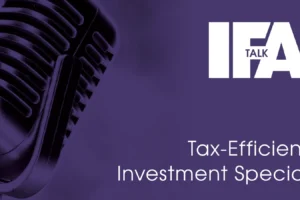For today’s Friday Focus, we’re turning our attention to the latest Moneyfacts UK Treasury Report, which reveals that average two- and five-year fixed mortgage rates have risen for the first time in eight months. Industry experts are weighing in on what this could signal for the housing and lending markets. With the Autumn Budget fast approaching, uncertainty around inflation, interest rates and potential tax changes is shaping a more cautious stance from lenders.
Industry experts and professionals have commented on the outlook below:
John Phillips, CEO of Just Mortgages and Spicerhaart, said: “A slight jump in mortgage rates certainly reflects the uncertainty we’re seeing in the market, as stubborn inflation impacts the potential outlook on interest rates and unsettles swap rates in the process. The elephant in the room is obviously the upcoming Budget, which, combined with the factors already in play, is likely causing lenders to take a more cautious, measured approach to protect margins while maintaining some level of competitiveness.
Whether this rise in rates will be a trend likely depends on the outcome of the Budget and how far the Chancellor goes with changes to tax policy. If rumoured changes to stamp duty do materialise, we could see a release of some pent-up demand, which is positive. Either way, getting the Budget out of the way will break the holding pattern we are seeing, will encourage activity and will hopefully give borrowers and lenders a clearer picture of the path ahead.
The important thing to remember is that lenders need to lend. Whether it’s end of the year or the financial year end next year, lenders have targets to hit, and this will be a primary motive when it comes to pricing. As trusted advisers, we have to control what we can control, remain proactive and deliver the value only we can to customers trying to navigate the market. While the Budget has set the cat amongst the pigeons, there are still many positives to take with plenty of money in the market from a broad range of lenders, good product choice and rates that still remain competitive. It’s up to us to remind our clients of this, demonstrate the value we offer and highlight the many opportunities still available in today’s market.”
Richard Pike, chief sales and marketing officer at Phoebus Software, comments:
“The first rise in average fixed mortgage rates in eight months is a timely reminder that while we may be past the peak of the rate cycle, volatility hasn’t gone away. Lenders continue to navigate a fine balance between funding costs, swap rate movements and consumer affordability, and even small shifts in inflation expectations or gilt yields can quickly filter through to product pricing.
Whether this marks the start of a broader upward trend will largely depend on how inflation tracks and what comes out of the budget in November. For brokers and advisers, the key is to help clients understand that this is still a competitive market but one that demands agility. Rate changes can happen quickly, so proactive communication and realistic affordability discussions are essential. While the economic backdrop is uncertain, lenders are innovating around product flexibility – from longer-term fixes to green incentives – giving advisers more levers to help clients find solutions in what remains a challenging but active market.”
James Enos, National Account Manager at Hodge Bank comments:
“Recent data revealing the first rise in mortgage rates in eight months marks an important shift in the market. According to Moneyfacts UK, the average two- and five-year fixed rates have edged up by 0.02%, to 4.98% and 5.02% respectively. Though marginal, this movement signals that the period of steady rate declines may have reached its floor.
We see this as the beginning of a more measured but sustained period of upward pressure. Inflation remains persistent, and wholesale funding costs are climbing again, both of which are influencing lender pricing. For borrowers coming to the end of fixed-rate terms or seeking to lend into retirement, even a small rise can have a notable impact on affordability. The key message for 2025 is clear while rates may stabilise at a higher level rather than spike sharply, the days of expecting continual decreases are likely behind us.
In the short term, three factors are shaping the direction of the mortgage market. Firstly, inflation and Bank of England policy remain critical. With inflation still above target, the Bank is likely to maintain base rates for longer, keeping mortgage rates elevated. Secondly, lenders’ funding and risk margins are tightening, prompting a more cautious pricing approach. Finally, borrower behaviour is evolving, as more customers transition off lower fixed deals and into products with higher monthly repayments, creating pressure on affordability and risk management.
Looking ahead, the medium-term outlook suggests a market driven by structural changes in borrower demographics and economic conditions. Demand among older first-time buyers, self-employed individuals and those lending into retirement is growing, requiring greater flexibility in lending criteria. At the same time, limited housing supply and sustained demand are keeping prices high, pushing borrowers toward longer loan terms. The upcoming Autumn Budget could also influence affordability and confidence, depending on any measures introduced around housing and tax relief.
For brokers and advisers, this shifting market landscape reinforces the importance of early, strategic action. Clients with deals due to expire within the next year should begin discussions now to avoid last-minute rate shocks or limited options. It’s also crucial to match clients with lenders that understand complex financial situations, from non-standard income streams to borrowing into later life.
Finally, affordability stress-testing remains key. With the potential for further modest rate increases, borrowers must understand how their payments could change and build in appropriate buffers. For those approaching or in retirement, ensuring flexibility within loan structures will be vital to maintaining financial stability.
This small rate rise may seem insignificant on its own, but it reflects the beginning of a new phase for the mortgage market, one defined by adjustment and resilience. For brokers and advisers, the opportunity lies in preparation, tailored advice and partnerships with flexible lenders who can help clients navigate this evolving environment with confidence.”















